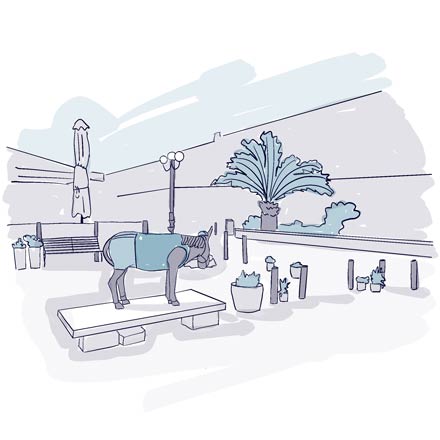
1. Place Theotokopoulos
Here you are in Theotokopoulos Square, the true heart of Fira. This is where all the streets converge, where travelers meet up, and where the life of Santorini’s capital beats strongest. Read more
Tour
1.3 km
1h
16 audios
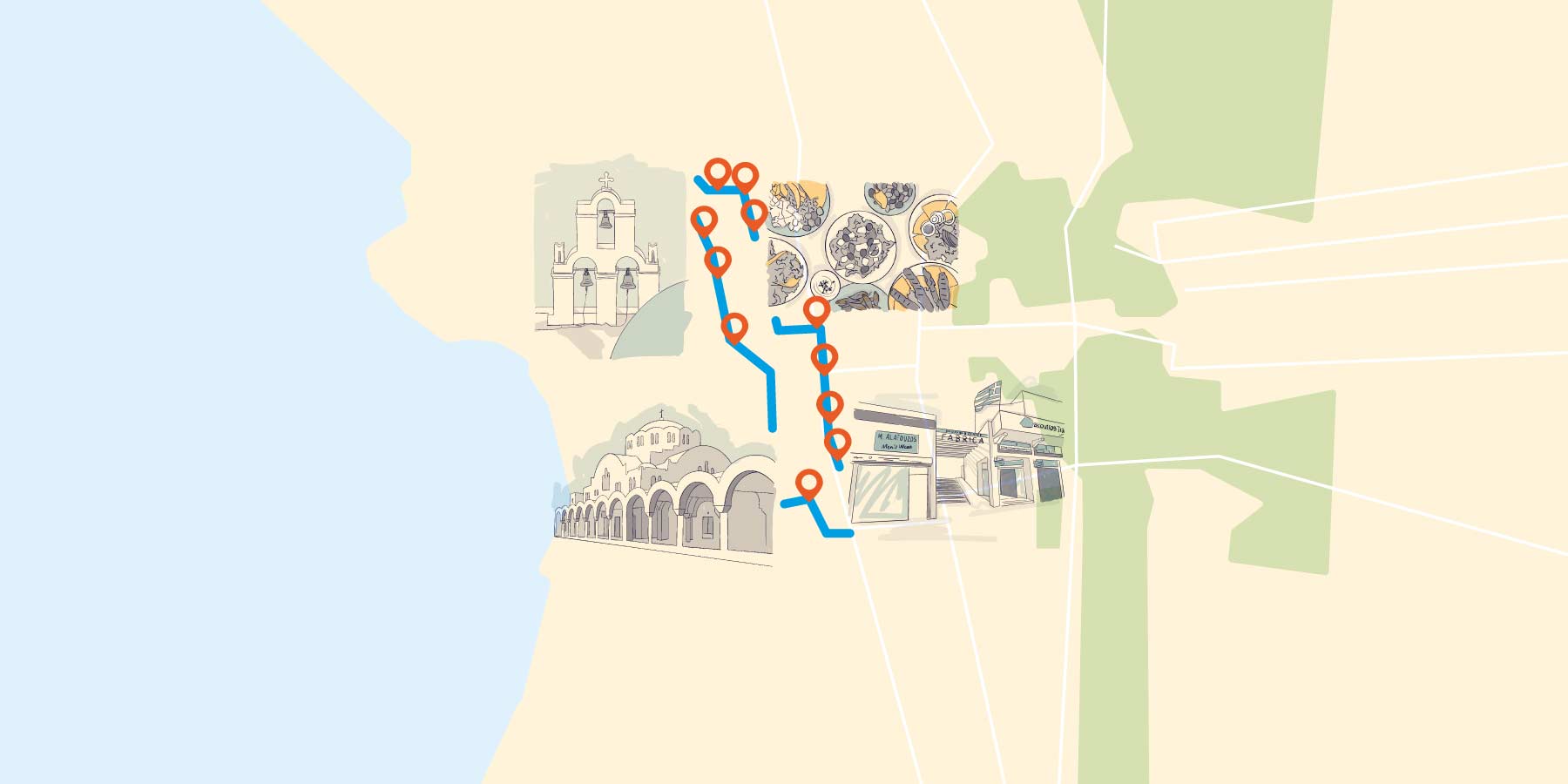
Text version
Welcome to Fira, the dazzling capital of Santorini and the island’s beating heart. Perched on the cliffs of the caldera, the town looks as if it’s floating above the Aegean, with whitewashed houses spilling down in breathtaking terraces. Every narrow lane hides a surprise—a blue-domed chapel, a balcony hanging over the void, a colorful little shop, or a terrace where you can sit back and take in the endless horizon. Fira blends history and modern life: you’ll find museums telling the story of the island’s Minoan past, buzzing cafés, traditional tavernas, and a lively nightlife. It’s also the perfect place to set out and explore the rest of Santorini, whether you hike the panoramic trails to Imerovigli and Oia, make your way down the 600 steps to the old port, or head out by boat to the volcano. As you wander, you’ll come across Fira’s famous landmarks along with its hidden gems. So keep your eyes open—the magic of Santorini begins right here, suspended between sky and sea.

Here you are in Theotokopoulos Square, the true heart of Fira. This is where all the streets converge, where travelers meet up, and where the life of Santorini’s capital beats strongest. Read more

You’re standing in front of a monument that might almost go unnoticed in this small park—but don’t be fooled. It carries a heavy history, a story of a little-known tragedy from the 20th century: the genocide of the Pontic Greeks. Read more

In Fira, as in the rest of Santorini, food is at the very heart of the experience. Step into a traditional taverna and you’ll be welcomed by the scents of olive oil, fresh herbs, and grilled fish blending with the salty sea breeze. Read more
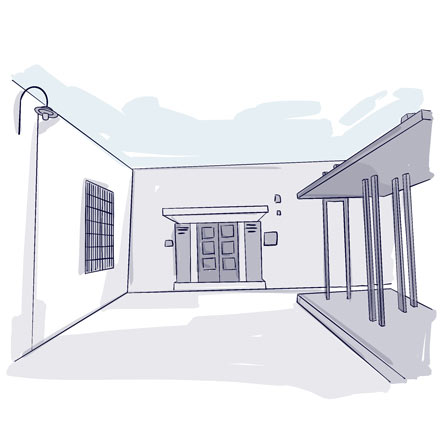
The Archaeological Museum of Thera sits right in the heart of Fira. It’s a small museum, often overshadowed by its more famous neighbor, the Museum of Prehistoric Thera, but it’s absolutely worth a stop. Read more
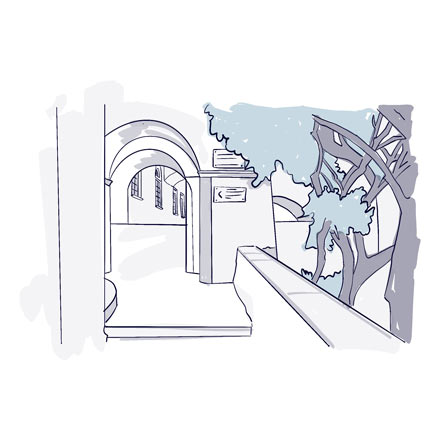
Before turning left to climb the stairs, take a few steps down the alley in front of you and you’ll come to the entrance of the Megaro Gyzi Cultural Center. Read more
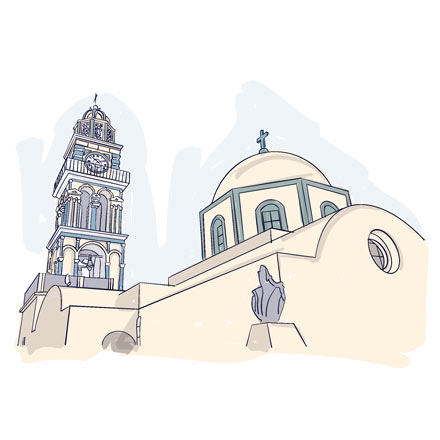
In front of you stands the Cathedral of Saint John the Baptist, one of Fira’s most distinctive religious landmarks. Read more
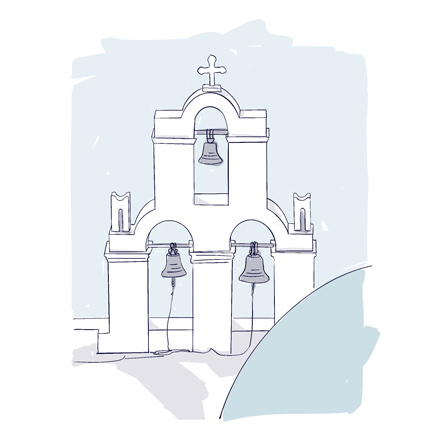
On your right, just a short walk away, the street leads to one of Santorini’s most iconic landmarks: the famous Three Bells of Fira. With their vivid blue dome, whitewashed walls, and bell tower topped with three bells, they perfectly capture the postcard image of the island. Officially known as the Catholic Church of the Dormition, it was built in 1757 and dedicated to the Virgin Mary. Read more
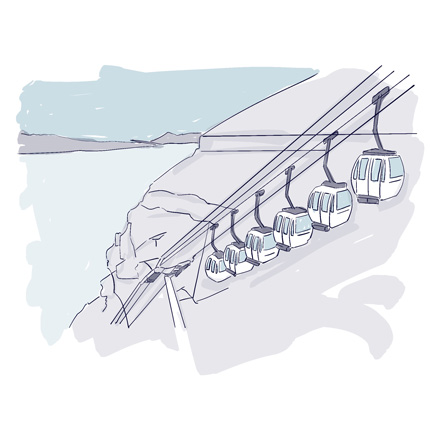
You may have already spotted it gliding above the cliffs—or at least heard of it—the Fira cable car is one of Santorini’s most iconic ways to get around. Read more

Before you stretches one of Santorini’s most breathtaking views: the caldera, unfolding in all its dramatic beauty. It was born more than three and a half thousand years ago, when a cataclysmic eruption blew apart the heart of the island. Read more

You are now on Agiou Mina Street, one of the most scenic walks in Fira. This narrow lane winds along the cliffside, offering breathtaking views of the caldera at every turn. Between whitewashed façades and flower-filled terraces, sudden openings reveal the Aegean and the volcanic islets shimmering in the distance. Read more

Welcome to Santorini, one of the most captivating islands in the Mediterranean. You’re standing on the traces of an ancient civilization and a cataclysm that reshaped history. More than 3,600 years ago, there was no caldera before you—only a round, flourishing island known as Kalliste, “the most beautiful.” Read more
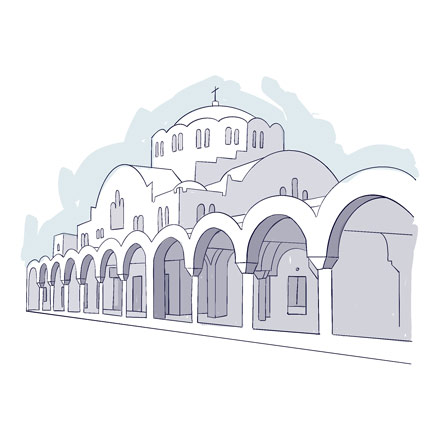
You are standing in front of the Holy Metropolitan Church of Ypapanti, the great Orthodox cathedral of Fira. Built in 1827 and dedicated to the Presentation of Christ in the Temple, it remains the island’s religious seat to this day. Read more
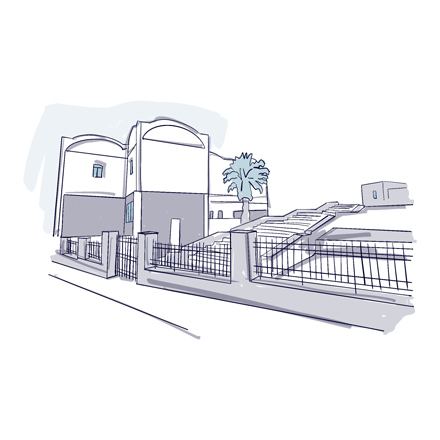
The Prehistoric Museum of Thera is one of Fira’s unmissable highlights. Opened in 2000, it was created to showcase the extraordinary finds from Akrotiri, the Bronze Age city often nicknamed the “Pompeii of the Aegean.” Read more
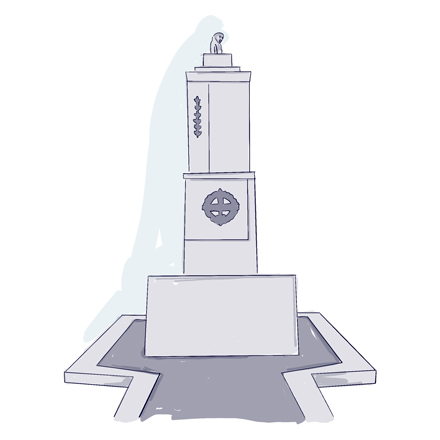
Here you are in front of the war memorial on Dekigala Street, a modest monument but one rich in meaning. It honors the people of Fira who lost their lives on April 23 and 24, 1944, during the battles to free the town from German occupation Read more
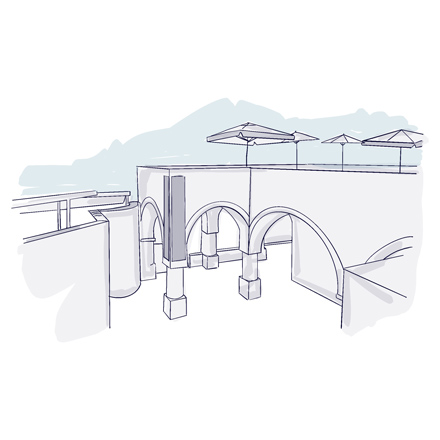
The Santozeum is one of Fira’s most original cultural spaces, perched high on the cliffs of the caldera. This striking building has had many lives. When it first opened in 2011, it became known for its faithful reproductions of the Minoan frescoes unearthed at Akrotiri. Read more
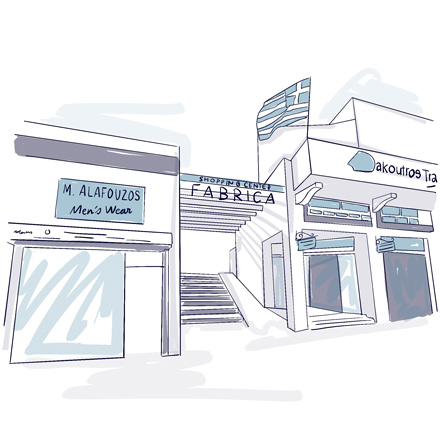
You are now at the Fabrica Shopping Center, an unusual stop in Fira with a surprising past. Back in 1892, this was the site of Santorini’s very first mechanical flour mill—a pioneering building for its time that shaped the island’s economy for more than seventy years. Read more


Discover Fira with app
An interactive guide through the most beautiful streets, squares, and districts
16 fun audioguides full of historical facts, anecdotes, and legends
Between sky and sea, let yourself be captivated by Santorini’s natural treasures: its volcano, hot springs, and the enchanting island of Thirassia.
This iconic village in the north of Santorini is world-famous for its spectacular sunsets, which draw hundreds of visitors every evening. Its narrow alleys lined with whitewashed houses and colorful shutters, blue-domed churches perched on the cliffs, and numerous art galleries make it one of the most photogenic spots in the Mediterranean.
Just a short walk from Fira, this quiet little village offers a more relaxed, family-friendly atmosphere. Its panoramic terraces provide a different angle on the caldera, while its charming streets hide several traditional blue-domed churches.
Nicknamed the “balcony of Santorini” for its dominant position above the caldera, this hilltop village is less crowded than Fira and Oia. It is known for its cave-style hotels, romantic terraces, and exceptional viewpoints, especially at sunset.
This striking rocky outcrop, reached from Imerovigli by a steep path, was once home to a Venetian fortress that protected the island from pirates. Now in ruins, it remains a spectacular hiking destination, offering sweeping panoramas of the Aegean Sea and neighboring islands.
The island’s former capital, this fortified medieval village has preserved its authenticity. You’ll find a maze of cobblestone alleys, whitewashed houses, and Byzantine churches decorated with frescoes. From the top of its old kasteli, the view stretches across the whole of Santorini.
This well-preserved traditional village charms visitors with its peaceful atmosphere, far from the bustle of tourist centers. Shaded squares, family-run tavernas, and renowned wine cellars make it an ideal spot to discover Santorini’s famous volcanic wines.
One of the oldest villages on the island, Emporio features a fascinating medieval quarter. Its Venetian kastro rises above a labyrinth of narrow lanes, arches, and secret passages that reflect the site’s strategic importance over the centuries.
This exceptional archaeological site, often called the “Pompeii of the Aegean,” reveals the remains of a prosperous Minoan city buried by the volcanic eruption of the 17th century BC. Visitors can admire frescoes, pottery, and the remarkable urban layout of a town frozen in time.
This unique beach is famous for its striking red volcanic cliffs plunging directly into turquoise waters. Although access is sometimes restricted due to landslide risks, it remains one of Santorini’s most spectacular natural sights.
Accessible only by boat from Akrotiri, this secluded cove is framed by towering white limestone cliffs that contrast sharply with the dark sand and crystal-clear waters. It offers a more intimate and wild experience than the island’s busier beaches.
Stretching for several kilometers on the southern coast, these long volcanic black-sand beaches are lively in summer, with plenty of tavernas, beach bars, and clubs. They also offer many water sports, from diving to windsurfing.
At the foot of Mount Mesa Vouno, this seaside resort is famous for its wide black-sand beach and vibrant atmosphere. The seafront promenade is lined with restaurants, cafés, and shops, making it a perfect place for an evening out.
Perched high on Mount Mesa Vouno, this archaeological site combines breathtaking views of the Aegean Sea with the ruins of an ancient city. The remains date from the Hellenistic and Roman periods, including temples, baths, and dwellings.
Built in the 18th century at Santorini’s highest point, 567 meters above sea level, this monastery overlooks the entire island. Beyond its religious architecture, it offers extraordinary views of the caldera, hilltop villages, and the Aegean Sea, especially on clear days.
From the fiery caldera to the lively streets of Fira, Santorini reveals itself at your own pace.
200 audioguided tours for cities all around the world
Download
Comments